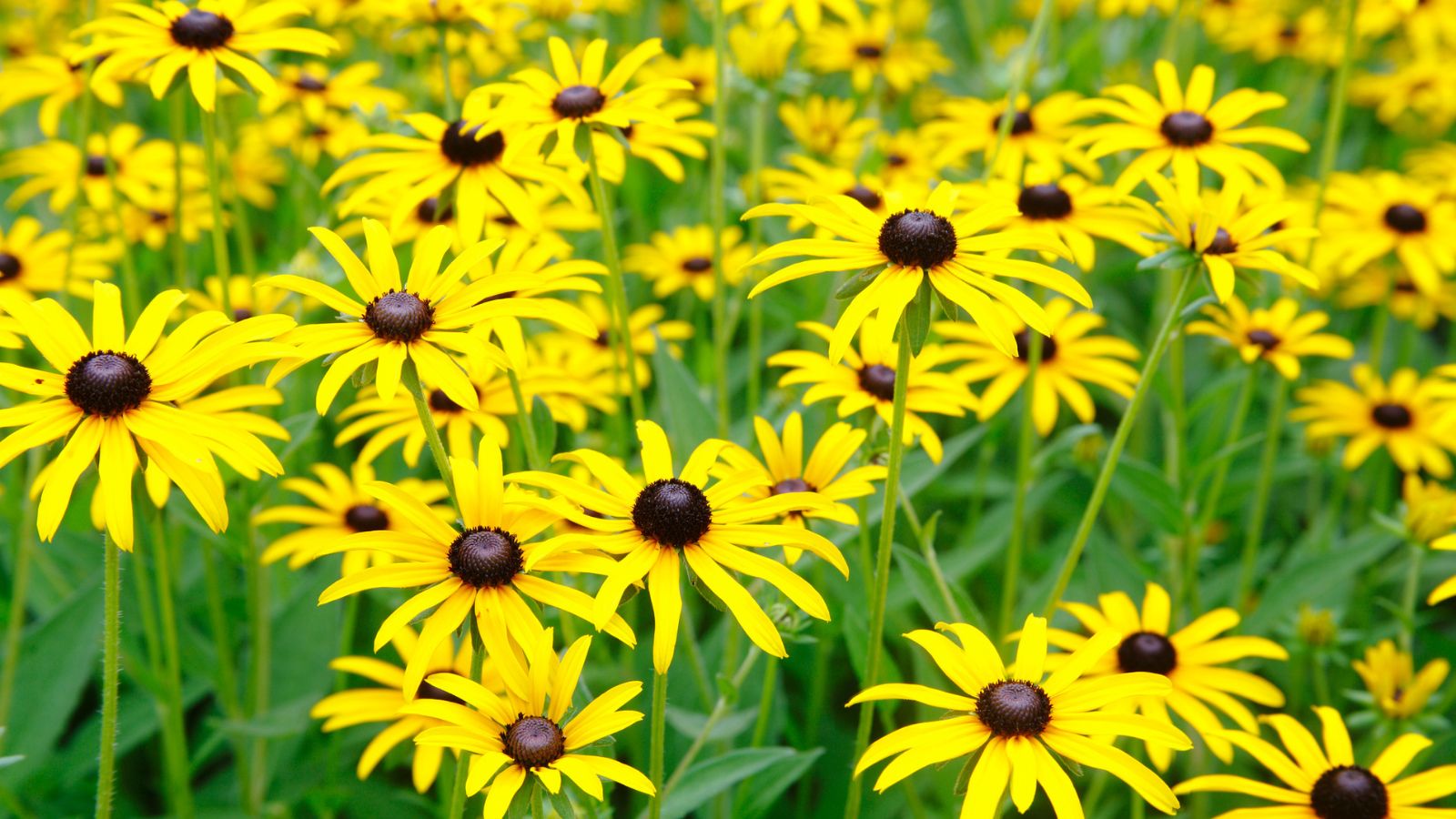When do black-eyed Susans bloom? And how to extend their flowering season?
Experts share their insights on when black-eyed Susans flower and why these vibrant blooms are worth the wait


Are you waiting... and waiting for your black-eyed Susans to bloom and wondering if it will ever happen?
For those who haven't yet discovered these beauties, black-eyed Susans, also known as Rudbeckia hirta, are native to North America, particularly in zones 3 to 9, and produce beautiful yellow petals with a distinctive black center which gives them their name. Their pleasing looks aside, they are also a great addition to your yard if you want to plant a garden for pollinators such as butterflies, bees and birds.
But when do they flower? We asked leading gardening experts when black-eyed Susans bloom, how long for and what you can do to prolong their flowering period.
When do black-eyed Susans bloom?
Typically, black-eyed Susans bloom from July through to the first frosts. However, some cultivars, such as the aptly named ‘Early Bird Gold’ will bloom from spring.
Note: some black-eyed Susans bloom twice a year, once in summer and again in fall. According to Tammy Sons, CEO of TN Nursery, 'their peak bloom time is often during July and August when their bright, yellow-gold petals fully unfold around a dark black-brown center, enhancing gardens and landscapes with their vibrant color.'

Tammy Sons runs TN Nursery, a plant nursery based in Tennessee, where they sell over 3,000 black-eyed Susan plants weekly and grow them from seeds.
How long do black-eyed Susans bloom for?
Good news, black-eyed susans have a blooming period much longer than most other flowers. They typically first bloom in either early or mid-summer, and then they’ll continue to flower up until the first frost when the time comes to cut black-eyed susans back.
Black-eyed susans are incredibly tolerant of mistreatment and neglect; these flowers are also known for still blooming abundantly even when not deadheaded or cared for as well as they should be.
Design expertise in your inbox – from inspiring decorating ideas and beautiful celebrity homes to practical gardening advice and shopping round-ups.
How can I prolong the bloom period of my black-eyed Susans?
To ensure abundant and long-lasting blooms, plant black-eyed Susans in a spot with full sun exposure for at least six hours a day and give them plenty of space to grow (they may need lifting and dividing over time).
Tony O’Neil, Founder of Simplify Gardening says, ‘They are adaptable plants that can thrive in different soil conditions, although well-drained soil is preferable. Regular watering and deadheading of faded flowers will help prolong the blooming season, as removing spent blooms encourages the plant to produce more flowers.’
To deadhead, cut out any spent blooms at the base of the stem. This should encourage a second flowering period towards fall.
When watering black-eyed Susans, be careful to aim for the base of the stem where it meets the soil; if you wet the leaves you may find that the plants develop a powdery mildew.

Tony is an expert gardener who has spent the past 40 years gardening and, for the past 15 years, teaching others with a thriving Youtube channel that has 370,000 subscribers. He is also the author of three gardening books: Composting Masterclass, Your First Vegetable Garden (both at Amazon), and Gardening with a Side of Science.
FAQs
Do black-eyed Susans come back every year?
Black-eyed Susans are perennial so they do flower every year. Annual varieties will sometimes return for another year's flowering if they haven't been deadheaded. Bear in mind that black eye Susans are enthusiastic self-seeders so you may find that you have to remove or divide plants over time to give them, and other plants, enough space.
Black-eyed Susans tend to grow to around 1 to 3ft tall and are wonderful planted amongst other prairie plants such as ornamental grasses. Relatively late bloomers, they will reward you with a long flowering season and self-seeding that can result in an abundance of blooms.

Seraphina is a contributing editor at Homes & Gardens, writing Solved features on organizing and storage. She loves to decorate and also grow her own produce from her home in London. Her previous experience includes working at Women's Health and Fabulous Magazine.